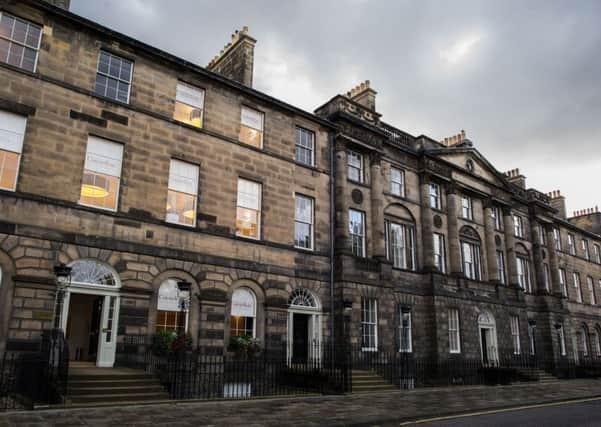David Alexander: New Town will always retain its old charms
This article contains affiliate links. We may earn a small commission on items purchased through this article, but that does not affect our editorial judgement.


The likely response will be something like this: “Yes, very picturesque… now can we go and look at some new-build apartments?”
As tourists, the Chinese are as complimentary about the New Town as most other visitors to the capital, but as investors they are unimpressed.
Advertisement
Hide AdAdvertisement
Hide AdThere are many reasons, one perhaps being that China is not renowned for conservation, or the fact that many investors have an association with Hong Kong, where new is king. Investors from Europe and North America are more keen on the New Town, although even they have to be persuaded that a 200-year-old property perhaps needing some TLC might produce better overall returns than something brand new and built to the most recent and highest building standards.
Those most convinced of the New Town’s qualities tend to be Scots themselves, plus other “home” investors from England, Wales, Northern Ireland and the Irish Republic, who realise that the area has something extra that goes beyond location and, in fact, is unique in the British Isles. Yes, Newcastle upon Tyne (think of magnificent Grey Street), Liverpool, Bristol and Dublin all have their Georgian or Regency gems but none of them can match the scale or overall completeness of Edinburgh’s New Town – or its revolutionary role in grid-style modern urban planning.
For as long as I have been doing business in Edinburgh, the New Town has always stood above any other city location in terms of residential capital values, based on £ per square foot. Even within the district itself there are two distinct markets – whole or divided town houses on one hand, and apartments on the other. The town houses appeal to a limited but wealthy market; occupiers of flats (whether as tenants or owners) are more mainstream but capital values have stayed well above the average for the city as a whole.
Another reason behind demand for the New Town has been a limited choice of higher-value, new-build apartments within walking distance of the city centre. But that is changing, with recent developments of this type at Holyrood, the former ERI site and, biggest of all, Fountainbridge, where land earmarked for several hundred thousand square feet of business space prior to the financial crash of 2008, has been given over to residential development. Meanwhile, residential accommodation forms part of the masterplans of both the New Waverley and Haymarket mixed-use schemes.
This could raise the possibility of investors veering towards these up and coming locations in preference to the New Town, especially as the former will involve lower initial capital and ongoing service costs and blank any worries about a major repair, at least for the first ten years. We already know what the Chinese think but what of others either new to the market or considering expanding their portfolios?
There is much to be said for new-build standards and the locations mentioned, which will appeal to a wide variety of reputable tenants, meaning minimal concerns about long periods of rental void. So it’s ideal for the investor who desires a portfolio that is largely “hassle-free”.
Despite this the New Town property, even with premium pricing and greater exposure to potentially-expensive repairs, will almost always provide the bigger overall return, based largely on the rise in capital value. But don’t take my word for it – check the statistics over the last ten, 20 or 40 years. And this, I believe, is set to continue because despite the growing number of new-build developments there is only, and only ever will be, one New Town.
Advertisement
Hide AdAdvertisement
Hide AdHenry Ford, one of the most famous capitalists of all time, once said “History is bunk”. In Detroit, maybe, but in Edinburgh’s New Town, history continues to pay dividends.
• David Alexander is managing director of DJ Alexander